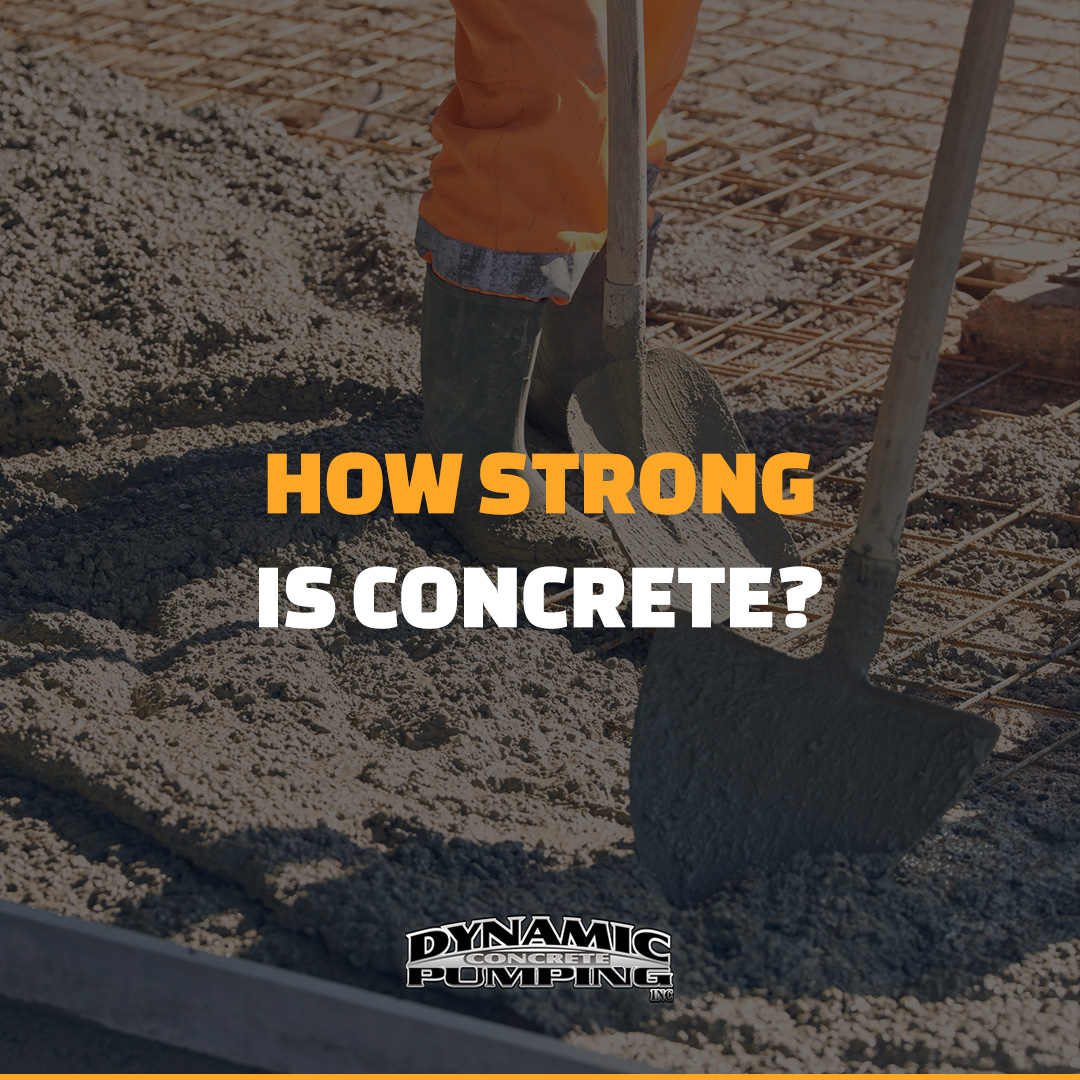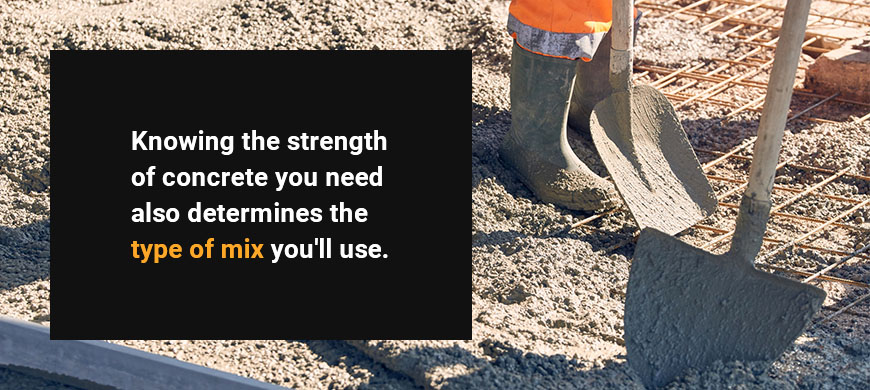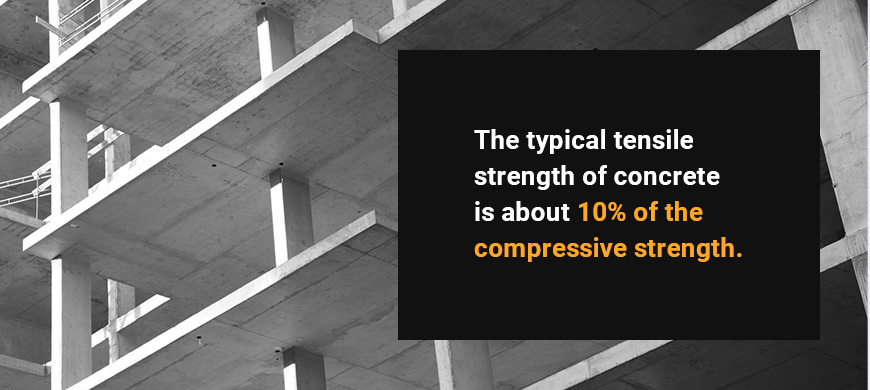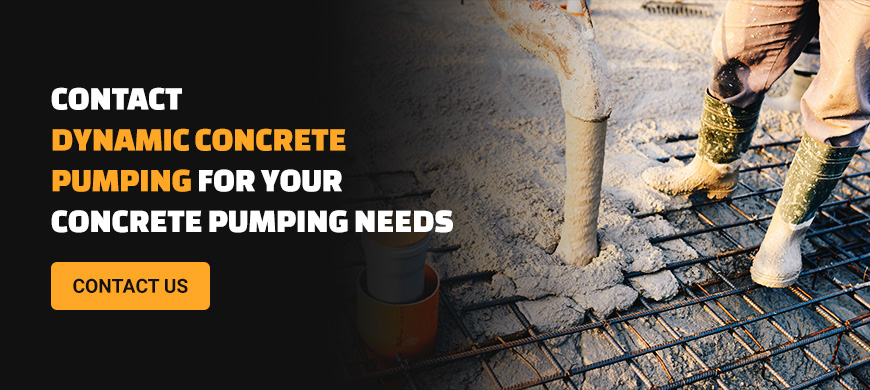
How Strong Is Concrete?
Posted By:Dynamic Concrete Pumping , Date: Aug 26, 2022

It’s no secret that concrete is one of the most durable construction materials — but just how strong is it? Because concrete has different strength properties and qualities, specific measurements of strength are ideal for certain applications. For example, the strength of the concrete mix to build a bridge will differ from a sidewalk.
Understanding how durable the concrete you’re working with is will help you adhere to codes and safety regulations, ensuring your projects meet the highest standards.
Why Is Concrete Strength Important?
The methods, technology and equipment used to create and work with concrete continue to advance to support a multitude of industries and applications. Still, the strength of concrete is the basis of rejection or acceptance for any use, and it can vary depending on the structure’s location. There are various codes that regulate different structures, ranging from first-floor columns and foundations to non-load bearing walls.
Having a specific concrete strength for the components you’re working with is crucial for maintaining safety levels, avoiding repairs, evading failures and remaining within budget. Without adhering to specific concrete strength codes, you put your workers, client and business at risk. Knowing the strength of concrete you need also determines the type of mix you’ll use. These proportions relate to the expected strength of the concrete.
Ultimately, concrete strength measurement decides whether you can move forward with construction or if you need to make adjustments to the mix. A deficiency in the required concrete strength can set back your operations.
Factors That Affect Concrete Strength
You can achieve varying strengths of concrete, depending on several factors, such as:
- Mixing
- Type of cement
- Quality and brand of cement
- Amount of cement used
- Foreign substances
- Substitutions
- Cleanliness of aggregate
- Grading of aggregate
- Water proportion
- Amount of admixtures
- Age of concrete
- Temperature
- Handling and placement
- Shipment variations
Achieving the correct strength of concrete is a process and requires detailed know-how of the above nuances. Consider each factor an essential step in creating the desired concrete strength, making sure to conduct adequate inspections, too. Make sure none of the variations affect the concrete strength you’re trying to achieve.
Types of Concrete Strength
Because concrete has different strength properties depending on various factors, it makes certain concrete strength pounds per square inch (PSI) ratings ideal for particular uses. The three types of concrete strengths include compressive, tensile and flexural, each measuring different properties of a concrete sample.
1. Compressive Strength
This measurement assesses the overall strength performance of a concrete mixture. It’s the primary measure of how well concrete can withstand loads that affect the size of the concrete fixture. Compressive strength will give you a comprehensive idea as to whether your concrete mix meets the requirements of your project.
Using cylindrical specimens made with fresh concrete mix, you can test its strength at various compression stages, often at seven and 28 days. At seven days, the test concludes the concrete’s strength gains, but the final PSI comes at 28 days. A high-strength concrete test is based on a 56-90 day period compared to the traditional 28 days.
Measured in PSI, compressive strength is tested in accordance with the American Society for Testing and Materials (ASTM). A higher concrete PSI indicates a stronger mixture that’s more durable and can last long term. The standard concrete strength PSI for structural concrete is at least 2,500 PSI. Anything lower than that is unsafe, according to the International Code Council.
The right concrete PSI depends on the project at hand, and most structures have a range of acceptable PSI measurements. Keep in mind that size and shape also affect strength. For example, driveways and industrial floor slabs range from 2,500-3,500 PSI, and high-rise buildings range between 10,000 and 15,000 PSI because of the extreme pressure the concrete is under.
Overall, compressive concrete strength is a standard measurement you can use to determine if a mixture meets the requirements of your specific job.
2. Tensile Strength
Tensile strength refers to the concrete’s ability to resist breaking or cracking under high pressure. While a single concrete structure is rarely loaded under pressure on its own, you still need to determine the strength to get an overall idea of how much it can withstand before reaching its breaking point. When tensile forces surpass the structure’s tensile strength, breaks and cracks begin to form.
Traditional concrete has a higher compressive strength than tensile. Therefore, if your project will undergo tensile strength, you will first need to reinforce it with high tensile strength materials like rebar. Unlike measuring compressive strength, there’s no precise test you can use to measure the tensile strength of concrete aside from one common method called splitting.
A split tensile strength test is when you test the compression of a cylinder on its side in accordance with the ASTM, which is usually indicated as a percentage of direct tensile strength. The typical tensile strength of concrete is about 10% of the compressive strength. For high-strength concrete, the tensile strength ranges between 7-8% at 8,000-10,000 PSI. For low-strength concrete, it ranges between 11-12% at 1,000 PSI.
3. Flexural Strength
The flexural strength of concrete is how much it can withstand bending or flexure. Applications like pavement and beams are two examples that are loaded in bending. Reinforcing a concrete structure with steel bars will boost its strength even further and prevent tensile failure, creating a stronger component than before.
Determine the flexural strength of concrete by testing a beam with a concentrated load at the third points. There’s also the center point loading method, which is an indication of a higher strength than the third points test.
Flexural strength is measured in the modulus of rupture in PSI, and according to the ASTM, two standard tests can determine the flexural strength of concrete. However, both tests are sensitive to various factors like handling, preparation and curing. Because flexural and tensile strength tests aren’t as accurate, compressive testing is the most common and reliable type of strength test.
How to Measure Concrete Strength
Knowing the strength of the concrete you’re working with allows you to make accurate and safe decisions on what it can handle within the scope of your project. There are three main ways you can measure the strength of concrete:
- Field-cured cylinders: The most accurate way to get a strength reading is to take a field-cured cylinder of concrete to a third party for testing, as all testing is done in a scientific environment.
- Rebound hammer test: The rubber hammer test uses a spring release method. The tool drives a plunger-tipped hammer into a slab of concrete, and the rebounded distance of the hammer is measured, determining the strength. This rebound method is quick, but the surface conditions of the concrete can affect the measurement.
- Drilled core method: A third way to measure the strength of concrete is the drilled core technique. The first step is to drill into the concrete and extract a sample of material. The sample goes through a compression machine to determine its strength. This method is very effective and can even test decades-old concrete. The one downfall is destroying a part of the concrete you’re using.
When you need a fuller understanding of the strength of your concrete, rely on one of the above methods for accurate results.
Contact Dynamic Concrete Pumping for Your Concrete Pumping Needs
With more than 40 years of experience in the industry, we work with the latest technology to continuously improve our services. When you have a project that requires commercial concrete pouring, contact one of our technicians to learn more about our services. We look forward to hearing from you!




